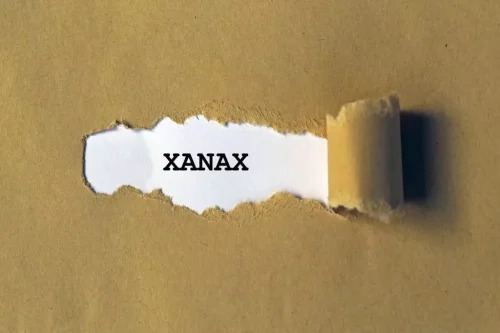Alcohol Withdrawal Syndrome

Approximately one-half of patients with alcohol use disorder who abruptly stop or reduce their alcohol use will develop signs or symptoms of alcohol withdrawal syndrome. The syndrome is due to overactivity of the central and autonomic nervous systems, leading to tremors, insomnia, nausea and vomiting, hallucinations, anxiety, and agitation. If untreated or inadequately treated, withdrawal can progress to generalized tonic-clonic seizures, delirium tremens, and death. The three-question Alcohol Use Disorders Identification Test–Consumption and the Single Alcohol Screening Question instrument have the best accuracy for assessing unhealthy alcohol use in adults 18 years and older.
Alcohol Withdrawal
Withdrawal from cocaine and amphetamine results in sedation and a state resembling adrenergic blockade, death is rare. The clinical presentation consists of a spectrum of signs and symptoms, including autonomic hyperactivity, tremulousness, restlessness, seizures, and potentially life-threatening alcohol withdrawal delirium. Anyone who is having severe symptoms of alcohol withdrawal syndrome, such as seizures, hallucinations, or prolonged vomiting needs immediate medical treatment. Less frequently, people can develop severe symptoms of alcohol withdrawal syndrome. In patients who present with seizures, a thorough neurological and general medical evaluation is a must to detect alternative cause of seizures. Patients with new onset seizures should preferably undergo brain imaging.

1. Markers useful in the emergency setting
Risk factors for alcohol use disorder include a family history of problems with alcohol, depression and other mental health conditions, and genetic factors. When a person is detoxing from alcohol, the symptoms may begin anywhere from 6 hours to a few days after their last drink. For those trying to detox from alcohol, it is vital to do so under the supervision of a doctor, as the withdrawal symptoms may be severe.
Detoxification
- More recently, other drugs have been investigated as treatments for AWS (figure 1).
- This may include medications, therapy, or both and can be offered in a variety of settings, both inpatient, outpatient, or a hybrid model.
- A quiet room without dark shadows, noises, and other excessive stimuli (i.e. bright lights) is recommended [46].
They include frequent reassurance, reality orientation, and nursing care [38]. A quiet room without dark shadows, noises, and other excessive stimuli (i.e. bright lights) is recommended [46]. The risk for severe AWS can be assessed by using the LARS (Luebeck Alcohol withdrawal Risk Scale) [41], or the recently proposed PAWSS (Prediction of Alcohol Withdrawal Severity Scale) [42]. Acute alcohol ingestion produces CNS depression secondary to an enhanced GABAergic neurotransmission [9] and to a reduced glutamatergic activity. The stimulation of GABAA receptors [10] and the inhibition of N-methyl-D-aspartate (NMDA) receptors [10, 11] represents the most known mechanisms. When the alcohol level suddenly drops, your brain stays in this keyed up state.
Withdrawal Syndromes
This is sometimes referred to as protracted or post-acute alcohol withdrawal (PAW), though it’s not recognized in DSM-5. It’s estimated that about 75% of people following acute alcohol withdrawal experience prolonged symptoms. Moderate symptoms of alcohol withdrawal may last up to 6 days, whereas severe symptoms may last for 5 to 7 days. The symptoms most commonly begin between 6 to 24 hours after your last drink. Still, some symptoms — often more severe — can set in after 2 to 3 days. If you live with alcohol use disorder (AUD) and want to take steps to stop heavy drinking or reduce your intake, you may be concerned about possible withdrawal symptoms and whether they may make it harder for you to reach your goal.
Benzodiazepines are first-line therapy for moderate to severe symptoms, with carbamazepine and gabapentin as potential adjunctive or alternative therapies. Physicians should monitor outpatients with alcohol withdrawal syndrome daily for up to five days after their last drink to verify symptom improvement is sneezing a sign of withdrawal and to evaluate the need for additional treatment. Primary care physicians should offer to initiate long-term treatment for alcohol use disorder, including pharmacotherapy, in addition to withdrawal management. Alcohol withdrawal is commonly encountered in general hospital settings.
- Thinning of hair, spider angioma, and gynecomastia are all also seen in patients with chronic alcohol use disorder.
- However, the symptom-triggered regimen has been shown to reduce total BZD consumption and treatment duration with respect to fixed-dose in patients at low risk for complicated AWS [53].
- You may also receive other medications or treatments for related health issues, like IV fluids for dehydration and electrolyte imbalances or antinausea medicines if you experience vomiting.
- Symptoms of alcohol withdrawal syndrome may develop within 6–24 hours after the abrupt discontinuation or decrease of alcohol consumption.
- Patients need to be advised about the risks and to reduce the dose, in case of excessive drowsiness.
Causes of Alcohol Withdrawal
Moreover an effective treatment of AWS should be followed by efforts in increasing patient motivation to maintain long-term alcohol abstinence and facilitate the entry into a relapse prevention program [6, 44]. Further research is needed to understand how the treatment of mothers with substance use disorders during the birth hospitalization may leave them ill-prepared to care for their newborns after discharge. Thus, mothers are both separated from their newborns and discouraged from breastfeeding, each of which may present barriers to developing a relationship with their newborn. Moreover, given the complexity of care and the intensity of resources needed to manage withdrawal in infants with NOWS, many mothers may not receive the same newborn teaching (eg, safe sleep) from health care professionals that other mothers are given.


It forms a major part of referrals received by a consultation-liaison psychiatrist. This article aims to review the evidence base for appropriate clinical management of the alcohol withdrawal syndrome. We searched Pubmed for articles published in English on pharmacological management of alcohol withdrawal in humans with no limit on the date of publication. Articles not relevant to clinical management were excluded based on the titles and abstract available.

